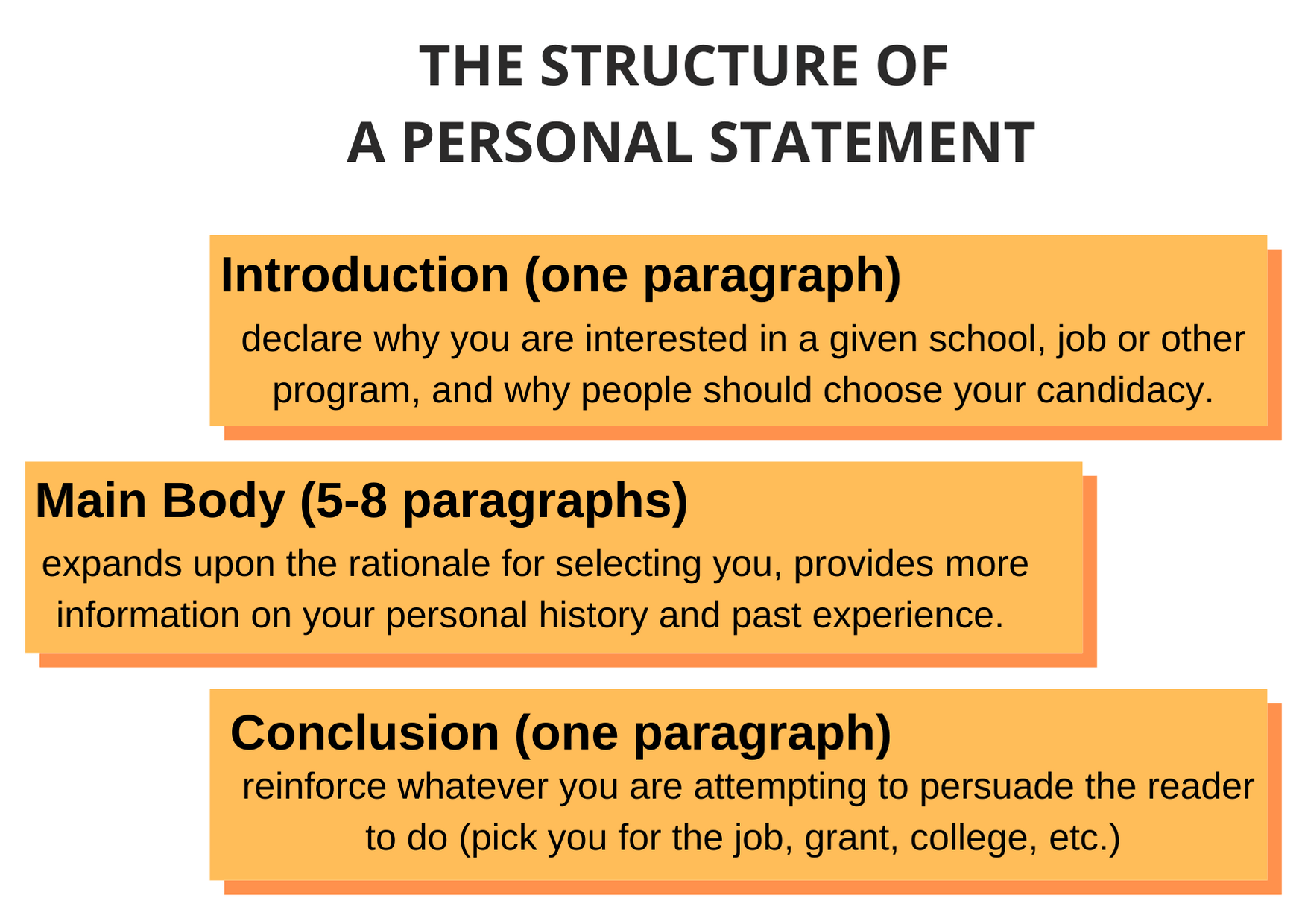How to Write a Personal Statement
Writing Guide
Whether you’re going to apply to a college or trying to land your dream job, sooner or later, you’re going to have to write a personal statement. A good statement can help college admission boards and potential employers understand exactly who you are. These essays can help you summarize your background and shed light on your potential. Personal statements can often be the key discriminator for being selected to an academic program or that job you always wanted. There are several factors that go into preparing an effective personal statement; if you understand them, you’ll be on the way to writing one that can make a real difference. Let’s take a close look at how to write a great piece.
Definition
A personal statement is a biographical essay written to persuade people to make some sort of decision about the essay’s author. Such statements are most frequently associated with college applications; along with school transcripts and test scores, most college applicants have to submit an essay about who they are and why the admission committee should select them to attend.
Additionally, many companies and government agencies require applicants to submit personal statements as well, particularly for entrance into executive training programs or other high-profile jobs. Finally, they are often used to inform disciplinary proceedings as well, where boards of people are attempting to decide whether or not to censure or punish an individual; in those cases, a well-written piece can help ensure a more lenient outcome. While lengths may vary, most statements are 1,200 words or less.
Why Is It Significant?
Since personal statements are often submitted with other information and documents, such as test scores, academic transcripts, and resumes, do they really matter all that much? Absolutely! Here are four reasons why they are so important:
- Provide Personal Insight. In most cases, it will be difficult for evaluators to gauge what kind of person you are merely by reading your transcripts or resume. A statement will enable you to tell readers exactly who you are, in your own words.
- Share Motivations. Your resume will help evaluators understand exactly why you want to be selected for something in a way that your performance data will be unable to communicate.
- Mitigate Record Gaps or Address Problematic Issues. If you are missing key qualifications or have some sort of negative information in your record, such as a bad grade or an adverse or disciplinary action, your statement will give you an opportunity to address it and mitigate the damage.
- Demonstrate Writing Skills. Don’t miss the chance to show your writing talent, which may be a discriminator in being accepted to an academic program or new job.
Types
Personal statements commonly fall into the following two categories: a general one and the designated response statement. A general personal statement is normally a free-form essay where you are given wide latitude to write about your life and personality. Typically, the only limit put on these types is the length or word count.

A designated response statement requires you to provide responses to a particular set of questions designed by your future employer or learning institution. While a general statement will require you to do a little more outlining work than a designated response statement, the preparation of both types is similar.
Steps of Writing
Step 1. Gather Key Personal Data
Firstly, collect all the data that you will use. Thinking about the unique aspects of your story and your motivations and capturing those thoughts in writing will make it easier when it comes to actually drafting your piece. Some questions you should answer about yourself include:
- What is especially unique or interesting about your personal history or background?
- Why should you be chosen for this opportunity?
- Why are you a superior choice compared to others who are pursuing it?
- What are your goals, and how are they directly related to this particular opportunity?
- If there are qualification gaps or adverse information in your records, how do you plan to overcome or mitigate them?
- Why are you interested in this particular academic institution, program, or career field?
- What relevant experience do you have in this particular field?
Take the time to write detailed responses to each of these questions; doing so now will aid you later when you have to begin drafting. Make sure you do not discard the work you do during step one, either; if you have to write more than one personal statement (i.e., for multiple college admission packets), returning to the notes you take here will help you meet those requirements as well.
Step 2. Create an Outline
Once you have assembled all of your information, you’ll be ready to create an outline. Think of your outline as a skeleton; it is the basic framework or structure around which you will write your statement. Preparing an outline will help you logically organize all of your thoughts and seamlessly introduce them into your statement. The most basic parts to work on are the following:
- Introduction. Your introduction should declare why you are interested in a given school, job, or other programs, and why people should choose your candidacy. Generally, it should take only one paragraph.
- Main Body. . The main body will cover all of the key information you need to highlight. The main body will expand upon the rationale for selecting you that was provided in the introduction. It will also provide more information on your personal history and include past experience or expertise you have in the given field. If you have resume shortfalls or adverse actions in your record, you will address them in the main body as well. In most cases, the main body will consist of 5-8 paragraphs.
- Conclusion. . The conclusion should reinforce whatever you are attempting to persuade the reader to do. You should wrap it up in a single paragraph.
If you have to prepare a designated response statement, you won’t have to create such a detailed outline as described here. However, it will be helpful to use this approach to outline a response for each question you have been provided with.

Once you create your outline, begin fleshing it out. Under each main topic in the outline, write down a few of the key points you want to cover, taking care to look at all of the information you gathered in step one. The more thorough your outline is, the easier it will be to draft.
Step 3. Prepare the First Draft.
Using the rough sketch of your outline and the notes you took while gathering information, begin writing your report’s first draft. Flesh out the paragraphs you mapped in your outline with full sentences. In addition to completing your thoughts, try to develop effective transitions; this will reinforce the main themes of your piece, and help your readers move smoothly from one point to the next as well. Close your statement with a powerful conclusion that reemphasizes the main points and rationale you introduced earlier in the paper.
Once you have completed the first draft, review it for spelling, grammar, and general flow, then set it aside for a day or two. Getting a bit of mental distance from your first draft will allow you to approach it with a fresh perspective and help you improve the final draft.
Step 4. Write the Final Draft
After you have set aside your piece for a day or two, it will be the time to prepare the final draft. Open the paper back up and read it from beginning to end without making any edits. Then, read through it a second time, correcting any errors and marking any places you believe need to be revised. Here is a little checklist to use while revising your work:
- Does it clearly answer why you should be chosen?
- Is the paper focused enough, or are there so many thoughts within it that it’s confusing?
- Is the tone consistent throughout the entire paper?
- Is the piece balanced enough between biography, qualification, and motivation?
If the answer to any of these questions is no, then make the revisions necessary to improve the paper. Then, if possible, get a trusted team of professionals to review it and check for mistakes or even write a personal statement for you. Feedback from a reviewer can often make the difference between a good paper and a great one. Once the review is complete, finalize your statement and submit it with the rest of your application.
It can be difficult to summarize your life, your skills, and your motivation in just a short essay. However, if you take the advice offered here into consideration, you will be on track to write a compelling piece that persuades readers to choose you for the college or job of your dreams. Good luck as you get ready to put pen to paper!

